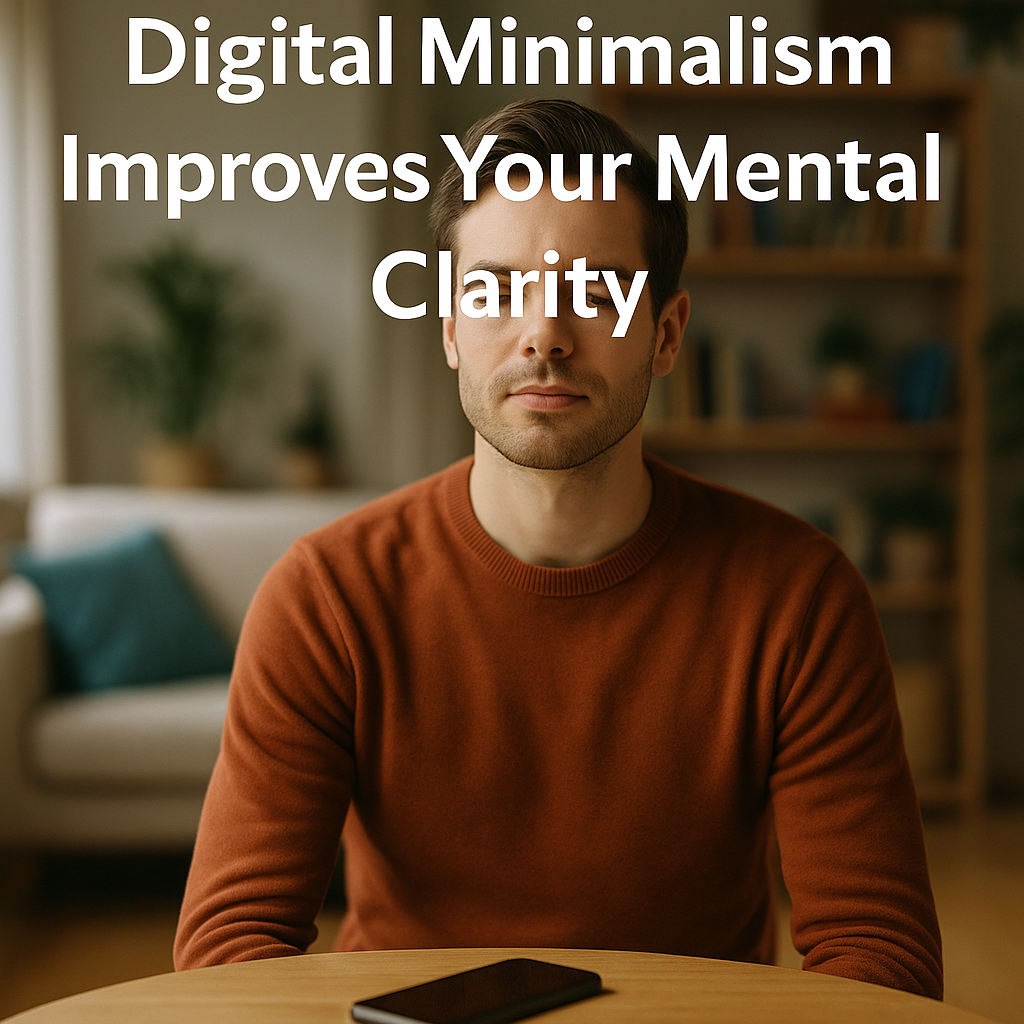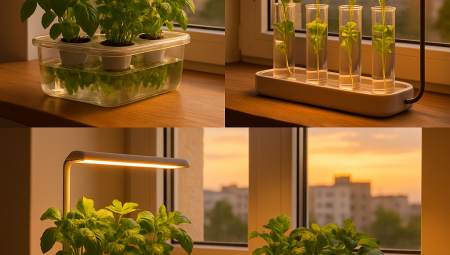What Is Digital Minimalism?
Digital minimalism is a lifestyle that promotes intentional technology use. Instead of constant scrolling or notification-chasing, you engage only with digital tools that serve your values and priorities.
Coined by author Cal Newport, digital minimalism isn’t about rejecting technology—it’s about reclaiming your focus, time, and peace of mind in a world of constant digital noise.
The Link Between Screen Time and Cognitive Overload
The average person checks their phone 96 times a day. Why does this matter?
Attention Fragmentation
-
Frequent app-switching trains the brain to expect constant novelty, reducing attention span.
Dopamine Loops
-
Likes, notifications, and pings trigger small dopamine hits—leading to habitual phone checking.
Decision Fatigue
-
Constant digital input requires nonstop micro-decisions, cluttering your mental bandwidth.
Over time, these patterns lead to burnout, anxiety, and a foggy sense of presence.
15 Ways Digital Minimalism Enhances Mental Clarity
-
Reduces Distraction – Fewer pings, more presence.
-
Boosts Focus – Longer attention spans for deep work or meaningful conversations.
-
Improves Sleep – Screen time reduction before bed supports better rest.
-
Increases Awareness – You notice surroundings and emotions more deeply.
-
Supports Deep Work – Uninterrupted time leads to higher quality output.
-
Enhances Creativity – White space in your mind allows new ideas to surface.
-
Calms the Nervous System – Less stimulation = less stress.
-
Fights FOMO – Reduced social comparison = more self-trust.
-
Strengthens Self-Control – Builds willpower by resisting tech temptations.
-
Improves Emotional Regulation – Less mood swings from viral content or clickbait.
-
Strengthens Memory – Fewer distractions allow experiences to stick.
-
Promotes Mindfulness – Being present without distractions becomes natural.
-
Builds Present-Mindedness – You engage more fully with people and places.
-
Supports Better Reading Habits – Reclaim long-form reading without interruption.
-
Reduces Cognitive Load – Simplifying digital life = lighter mental load.
Common Digital Distractions and Their Hidden Cost
Digital distractions aren’t always loud or obvious—they often disguise themselves as “urgent” or “harmless.” But over time, their mental toll compounds.
Social Media
-
Platforms are engineered to keep you scrolling. You lose track of time and gain little mental reward.
-
Comparison culture worsens anxiety, envy, and self-doubt—stealing peace and confidence.
Notifications
-
Each ping pulls your attention away from the present. Even glancing at a notification can disrupt focus for 20+ minutes.
-
They encourage multitasking, which actually lowers productivity and increases mistakes.
Multi-Device Usage
-
Watching TV while scrolling your phone while checking messages? It splits attention into unproductive fragments.
-
This behavior trains the brain to fear stillness, weakening your ability to concentrate or relax deeply.
The cost? Constant mental noise, reduced focus, and a drained nervous system.
How to Start a Digital Declutter
You don’t need to quit all tech—just use it deliberately.
Step 1: Take Inventory
-
List all digital tools you use: social media, email, apps, subscriptions.
-
Ask: Does this tool serve a meaningful purpose in my life?
Step 2: Remove Low-Value Inputs
-
Unfollow accounts that don’t uplift or inform you.
-
Turn off non-essential notifications.
-
Delete time-wasting apps—at least temporarily.
Step 3: Set Boundaries
-
Create screen-free zones (e.g., bedroom, dining area).
-
Use “Do Not Disturb” modes during deep work or rest hours.
-
Schedule “intentional screen time” instead of mindless checking.
Step 4: Fill the Space
-
Read a book. Walk outside. Call a friend. Do nothing.
These analog moments restore presence, memory, and creativity.
Tools and Habits for Long-Term Digital Minimalism
Sustaining digital clarity is easier with systems:
Tool/Habit Benefit Focus Timers (e.g., Pomodoro) Encourages structured screen breaks Screen Time Limits Monitors overuse of apps and platforms Email Batching Reduces inbox checking to 2–3 times per day Weekly Tech-Free Days Resets attention and nervous system Use of e-ink Devices Reduces eye strain and distractions during reading Minimalism isn’t rigid—it’s responsive. You can adjust these tools based on your needs.
Myths About Digital Minimalism
Let’s clear the air on a few misconceptions:
-
“You have to quit all social media.”
No. You just engage intentionally, not compulsively. -
“It’s only for people who hate technology.”
Wrong. Digital minimalists love tech—but use it as a tool, not a crutch. -
“You’ll miss out on everything.”
Actually, you’ll gain deeper engagement with what really matters.
It’s not about rejection—it’s about curation.
❓FAQs About Digital Minimalism and Mental Health
Can digital minimalism reduce anxiety and stress?
Yes. Cutting down screen time and dopamine-driven apps can calm your nervous system and lower cortisol levels.
How long does it take to feel mental clarity from a digital detox?
Most people report improved focus, sleep, and mood within 7–10 days of intentional reduction.
Can I still be productive while using fewer apps?
Absolutely. In fact, you’ll likely be more productive, since your brain isn’t constantly switching contexts.
Is this sustainable for professionals or business owners?
Yes. With boundaries and scheduled tech time, many professionals find greater focus and better work-life balance.
💼 Pro Tips for Practicing Digital Minimalism
-
Start small – Try 1 screen-free hour a day and build up.
-
Revisit your digital setup monthly – Declutter your tech like you do your home.
-
Replace, don’t just remove – Find offline hobbies or creative outlets.
-
Silence notifications permanently – You’ll be surprised how little you miss.
-
Use grayscale mode – Makes your phone less visually addictive.
-
Treat your attention as a resource – Don’t give it away freely.
📝 Conclusion: Reclaim Your Focus in the Age of Noise
Digital minimalism isn’t about quitting tech—it’s about choosing clarity over chaos. In a world where every app fights for your attention, choosing what to engage with becomes a radical act of self-care.
By simplifying your digital life, you can restore your ability to think, feel, create, and simply be present.
📣 Have you tried digital minimalism? What’s your biggest win—or challenge?
Drop your thoughts in the comments below—we’d love to hear from you!
🔗 External Resource: Cal Newport – Digital Minimalism Book
-



